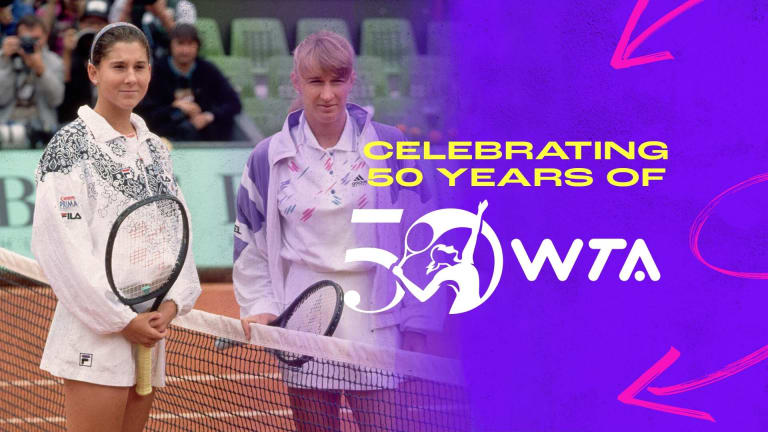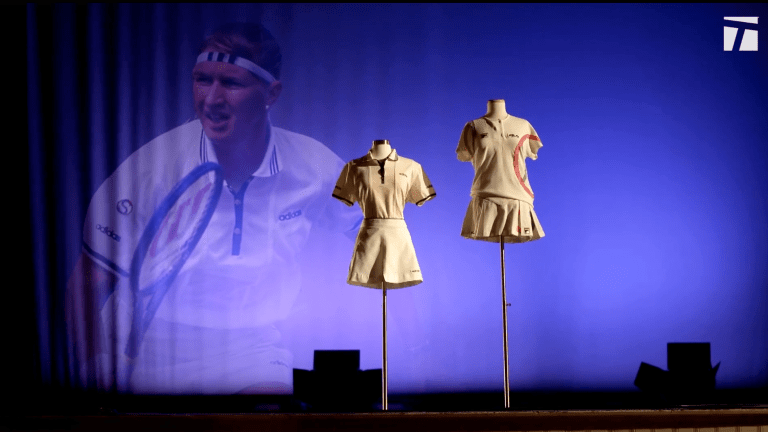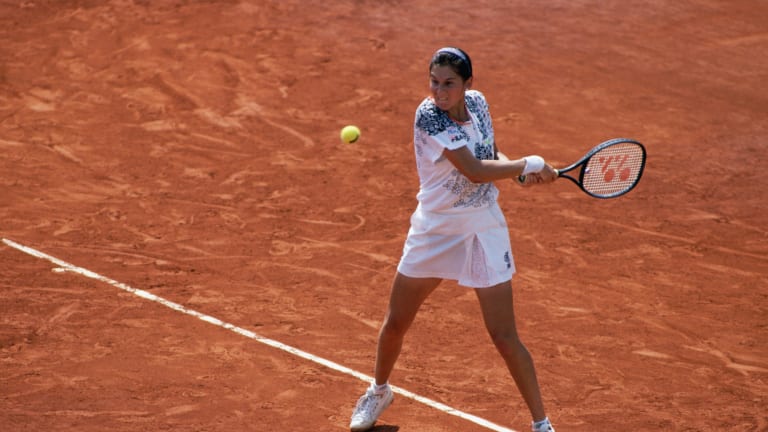Chapter 4: Steffi Graf and Monica Seles give us the next great sports rivalry
By May 01, 2023As the 50th year of the WTA Tour comes to an end, a look ahead to its next fifty
By Dec 31, 2023A spirit of activism has always been a part of the WTA tour
By Dec 11, 2023Chapter 10: From Venus and Serena to Naomi and Maria, the WTA's crossover icons are on a first-name basis
By Nov 07, 2023Approaching 80, Billie Jean King is still globetrotting for investment in women’s sports
By Oct 12, 2023Serena vs. BJK, Evert vs. Barty, Graf vs. Sharapova: Across 50 years, imagine these match-ups between WTA greats
By Oct 06, 2023The Room Where It Happened: WTA Tour marks 50 years, backwards and forwards
By Aug 26, 2023Chapter 8: The WTA tour's global reach extends to nations and athletes everywhere
By Aug 25, 2023Chapter 7: 50 years after the WTA was created, its future is now—and never-ending
By Jul 15, 2023Chapter 6: Austin, Graf, Sharapova and Raducanu exemplify the WTA's capacity for teenage stars
By Jun 21, 2023Chapter 4: Steffi Graf and Monica Seles give us the next great sports rivalry
Who ever thought that a player could challenge a Golden Slam winner, and—over just 15 matches—that a duo could give us contests like Chrissie and Martina?
Published May 01, 2023
Advertising

Much like Bjorn Borg and John McEnroe, who only played one another 14 times (7-7), Seles-Graf occupies the realm of conjecture. Prior to Seles' tragic stabbing, Graf led their rivalry 6-4. In all, they played just 15 matches against each other.
Advertising

Dubbed "Fraulein Forehand", Graf used her signature shot to win 22 Grand Slam singles titles and, like Seles, easily secure enshrinement into the International Tennis Hall of Fame.
Advertising

Left: What Graf wore during her win over Seles in the 1996 US Open final; middle: what Seles wore during her win over Graf in the 1990 French Open final; right: the two-hander—both with Seles' forehand and backhand—that shook up the tennis world.
Advertising

To many, Seles' win over Graf in the 1992 French Open final—10-8 in the third and deciding set—was their finest match. Said Seles, “Both of us deserved to win.”
© Corbis/VCG via Getty Images